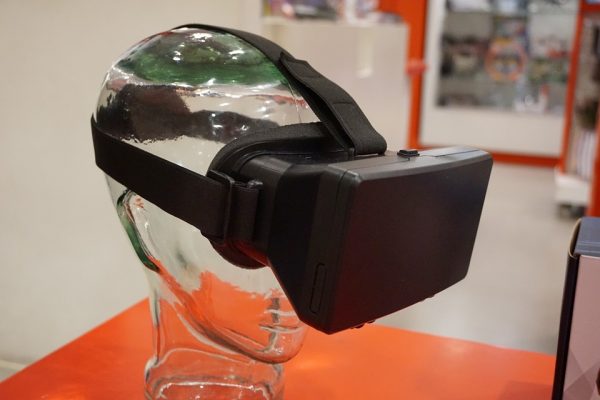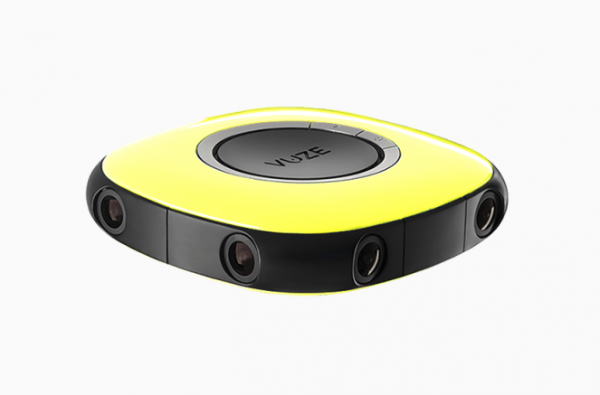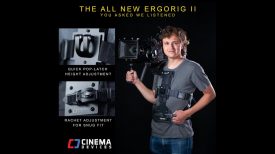
Although most interest in VR gear has been in 360-degree video cameras, there are some interesting options that offer compelling features despite delivering less than 360 degrees of content.
At this year’s Intel Capital Global Summit (Oct. 24-26), Altia Systems announced the PanaCast 3D VR kit, which shoots and stitches 4K 3D video in real-time into 180-degree panoramic videos.
Wait…180 degrees? Not 360…
It’s basic math: 360 is two times more than 180. But “more” doesn’t necessarily mean better.
Although most interest in VR gear has been in 360-degree video cameras, there are some interesting benefits to shooting less than 360-degree video.
One of the main issues many people have with 180-degree video is definitional. It’s not VR.
Or is it? It depends on who you ask. The VR world is rife with definitional dilemmas. Some use 360 as a defining metric: Can you look up, down, and all around? Others say 3D is the key: Can I perceive distance? There are plenty more who believe none of today’s photo- and video-based VR experiences qualify as true VR due to distortion issues, and still more who think you can’t have VR without interactivity within the space. At this rate, we may not land on a true definition for VR until we live in the Matrix (at least then we might be so duped that we don’t care to define it).

Although VR sub-genres and categories will continue to be defined in time, a more pressing question is what type of content (“VR” or not) do people want to experience today?
Some argue that 360-degree video provides the best immersion, while others swear by stereoscopic video. Although the two aren’t mutually exclusive, many of today’s 360-degree video cameras don’t actually shoot 3D video.
Stereoscopic video requires two cameras placed in such a way as to mimic human sight. One camera acts as the right eye, the other as the left. This gives us a sense of depth. With the Vuze camera, for example, there are eight cameras—four sets of two “eyes”—to create stereoscopic 360-degree video. However, the corners lose their dimension. It’s still impressive, but it is an issue we have to face when working with both 360 and 3D.

There’s also the question of directing the audience and telling a story within a 360-degree environment.
Many VR journalists and filmmakers have had to cope with the concept that they only have so much control in 360-degree spaces. You can attempt to direct people with text on the screen, 3D audio, or narration. Depending on the action in the scene, you might even be able to guide the viewer through the story with creative editing.
Finding solutions to guide the viewer is one way to handle it. Letting them loose in the headset is another. Offering some immersion AND some direction with 180-degree video can be another option.
For example, many concerts have been shot in 360. But when I’m at a concert, I’m looking at the stage 95 percent of the time. Maybe I’m the only one who does that, but I doubt it (based solely on all the SnapChats I sent of the backs of peoples’ heads from Lolla 2016).
Although concerts in 360 can be cool, 180-degree video offers another option—especially with the benefit of 3D video so I can feel the distance between my musical idol and myself.
If the action is only happening in one direction, maybe the other 180 degrees are erroneous. It certainly slows down processing time.
To combat this, companies have invested a lot of effort into field-of-view adaptive streaming, which essentially maximizes the resolution of what you’re looking at while reducing the resolution of content in your peripheral vision and behind you, adjusting resolutions as you turn around. If all the action of the video happens in one direction, perhaps you don’t need the remaining 180 degrees?
That’s what Altia Systems believes. The PanaCast 3D VR kit creates 180-degree 3D panoramic video that can be viewed in mobile headsets as well as HMDs. According to Altia Systems, PanaCast videos watched on an HMD resemble watching a 3D movie at the cinema. With the rate of adoption of VR headsets, 3D video (360 or not) offers a lot of potential.
Ultimately, VR in its most general sense seems to encompass any experience that is more immersive than the flat world of our digital forefathers. That could be 360, it could be 180, it could be 3D. Ultimately it’s up to the consumer to decide.
The PanaCast 3D VR kit offers live preview support and can be shared directly to a variety of apps, including Facebook Live and YouTube 360. Although the camera is largely marketed as a virtual meeting solution and works with Citrix GoToMeeting, Google Hangouts, Skype and the like, the company sees potential for the 3D kit in professional videography.
The PanaCast 3D VR kit costs $2,795 and is available for early adopters and will become available to all in the first quarter of 2017.
For more information, visit Altia System’s website.





